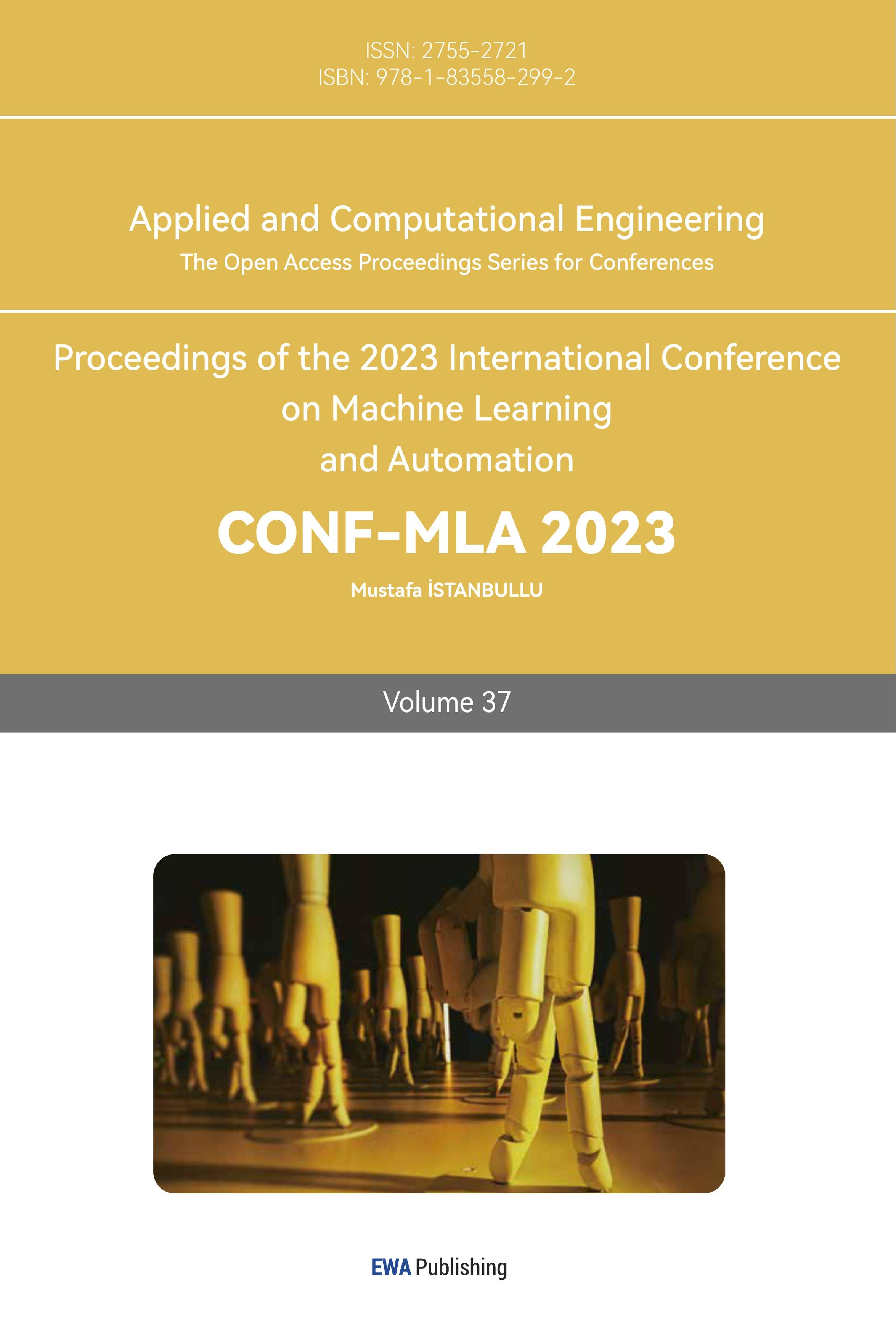References
[1]. Gill E W, Howell R K, Hickey K, Walsh J and Dawe B J, 1993, High frequency ground wave radar measurement of ocean surface parameters during the ERS-1 calibration-validation experiment, vol.1, Proceedings of OCEANS '93, Victoria, BC, Canada, pp. I55-I60.
[2]. Williamson B J, Fraser S, Blondel P, Bell P S, Waggitt J J and Scott B E, Oct. 2017, Multisensor Acoustic Tracking of Fish and Seabird Behavior Around Tidal Turbine Structures in Scotland, vol. 42, no. 4, in IEEE Journal of Oceanic Engineering, pp. 948-965.
[3]. Loran T, Barros Cardoso da Silva A, Joshi S K, Baumgartner S V and Krieger G, 2023, Ship Detection Based on Faster R-CNN Using Range-Compressed Airborne Radar Data, vol. 20, Art no. 3500205, in IEEE Geoscience and Remote Sensing Letters, pp. 1-5.
[4]. Zhang L, Huanq J, Jin Y, Hau Y, Jianq M and Zhang Q, April 2010, Waveform diversity based sonar system for target localization, vol. 21, no. 2, in Journal of Systems Engineering and Electronics, pp. 186-190
[5]. Zhang J, Du G,Lin J, Yi X and Jiang C, 2019, Improving the Signal-to-Noise Ratio of Underground Nuclear Magnetic Resonance Data Based on the Nearby Reference Noise Cancellation Method, vol. 7, in IEEE Access, pp. 75265-75275
[6]. Isla J and Cegla F, April 2017, Coded Excitation for Pulse-Echo Systems, vol. 64, no. 4, in IEEE Transactions on Ultrasonics, Ferroelectrics, and Frequency Control, pp. 736-748
[7]. Fitzpatrick A, Singhvi A and Arbabian A, 2020, An Airborne Sonar System for Underwater Remote Sensing and Imaging, vol. 8, in IEEE Access, pp. 189945-189959
[8]. Liang Z and Song C, 2022, DNLS: A Detection Method Based on Normalized Short-Time Fourier Transform-Radon Transform for Low Frequency Sonar Pulse Signal, vol. 10, in IEEE Access, pp. 7025-7041, 2022
[9]. Fu X, Fan Z, Ling M, Huang Y, and Ding X, Nov. 2017, Two-step approach for single underwater image enhancement, in Proc. Int. Symp. Intell. Signal Process. Commun. Syst., pp. 789–794.
[10]. Li C et al., 2020, An Underwater Image Enhancement Benchmark Dataset and Beyond, vol. 29, in IEEE Transactions on Image Processing, pp. 4376-4389
Cite this article
Cai,C. (2024). The applications of sonar and radar systems in underwater detection. Applied and Computational Engineering,37,254-258.
Data availability
The datasets used and/or analyzed during the current study will be available from the authors upon reasonable request.
Disclaimer/Publisher's Note
The statements, opinions and data contained in all publications are solely those of the individual author(s) and contributor(s) and not of EWA Publishing and/or the editor(s). EWA Publishing and/or the editor(s) disclaim responsibility for any injury to people or property resulting from any ideas, methods, instructions or products referred to in the content.
About volume
Volume title: Proceedings of the 2023 International Conference on Machine Learning and Automation
© 2024 by the author(s). Licensee EWA Publishing, Oxford, UK. This article is an open access article distributed under the terms and
conditions of the Creative Commons Attribution (CC BY) license. Authors who
publish this series agree to the following terms:
1. Authors retain copyright and grant the series right of first publication with the work simultaneously licensed under a Creative Commons
Attribution License that allows others to share the work with an acknowledgment of the work's authorship and initial publication in this
series.
2. Authors are able to enter into separate, additional contractual arrangements for the non-exclusive distribution of the series's published
version of the work (e.g., post it to an institutional repository or publish it in a book), with an acknowledgment of its initial
publication in this series.
3. Authors are permitted and encouraged to post their work online (e.g., in institutional repositories or on their website) prior to and
during the submission process, as it can lead to productive exchanges, as well as earlier and greater citation of published work (See
Open access policy for details).
References
[1]. Gill E W, Howell R K, Hickey K, Walsh J and Dawe B J, 1993, High frequency ground wave radar measurement of ocean surface parameters during the ERS-1 calibration-validation experiment, vol.1, Proceedings of OCEANS '93, Victoria, BC, Canada, pp. I55-I60.
[2]. Williamson B J, Fraser S, Blondel P, Bell P S, Waggitt J J and Scott B E, Oct. 2017, Multisensor Acoustic Tracking of Fish and Seabird Behavior Around Tidal Turbine Structures in Scotland, vol. 42, no. 4, in IEEE Journal of Oceanic Engineering, pp. 948-965.
[3]. Loran T, Barros Cardoso da Silva A, Joshi S K, Baumgartner S V and Krieger G, 2023, Ship Detection Based on Faster R-CNN Using Range-Compressed Airborne Radar Data, vol. 20, Art no. 3500205, in IEEE Geoscience and Remote Sensing Letters, pp. 1-5.
[4]. Zhang L, Huanq J, Jin Y, Hau Y, Jianq M and Zhang Q, April 2010, Waveform diversity based sonar system for target localization, vol. 21, no. 2, in Journal of Systems Engineering and Electronics, pp. 186-190
[5]. Zhang J, Du G,Lin J, Yi X and Jiang C, 2019, Improving the Signal-to-Noise Ratio of Underground Nuclear Magnetic Resonance Data Based on the Nearby Reference Noise Cancellation Method, vol. 7, in IEEE Access, pp. 75265-75275
[6]. Isla J and Cegla F, April 2017, Coded Excitation for Pulse-Echo Systems, vol. 64, no. 4, in IEEE Transactions on Ultrasonics, Ferroelectrics, and Frequency Control, pp. 736-748
[7]. Fitzpatrick A, Singhvi A and Arbabian A, 2020, An Airborne Sonar System for Underwater Remote Sensing and Imaging, vol. 8, in IEEE Access, pp. 189945-189959
[8]. Liang Z and Song C, 2022, DNLS: A Detection Method Based on Normalized Short-Time Fourier Transform-Radon Transform for Low Frequency Sonar Pulse Signal, vol. 10, in IEEE Access, pp. 7025-7041, 2022
[9]. Fu X, Fan Z, Ling M, Huang Y, and Ding X, Nov. 2017, Two-step approach for single underwater image enhancement, in Proc. Int. Symp. Intell. Signal Process. Commun. Syst., pp. 789–794.
[10]. Li C et al., 2020, An Underwater Image Enhancement Benchmark Dataset and Beyond, vol. 29, in IEEE Transactions on Image Processing, pp. 4376-4389









